Alex Russell Flint’s paintings have a storybook quality. Bucolic scenes precisely observed in a realistic style, often with hints of tension underneath. It’s fitting, then, that his home in the rolling hills of France’s Poitou-Charentes region, a magnificent 19th-century schoolhouse serving the thriving village of Argenton-Château, could leap straight from the pages of a children’s picture. . book.
Russell Flint, who is the great-grandson of watercolorist William Russell Flint, bought the defunct building in 2010 from fellow painter Pierre de Chevilly, who lived next door to his partner, French Nouvelle Vague actress Bernadette Lafont. Set into the hill above the river Argenton, the main building dates from 1850, with a second wing added in 1905. De Chevilly used L’Ancienne École as a studio, and had knocked down a few walls before he decided to downsize and sell. When Russell Flint found the keys, having spied it years before while on a walk, there were no bathrooms or kitchen and all the ceilings had collapsed. Extension cables came out of the only electrical plug that worked. Outside, gray tarmac covered the garden and a bluish concrete dressing obscured the view over the original stone walls.
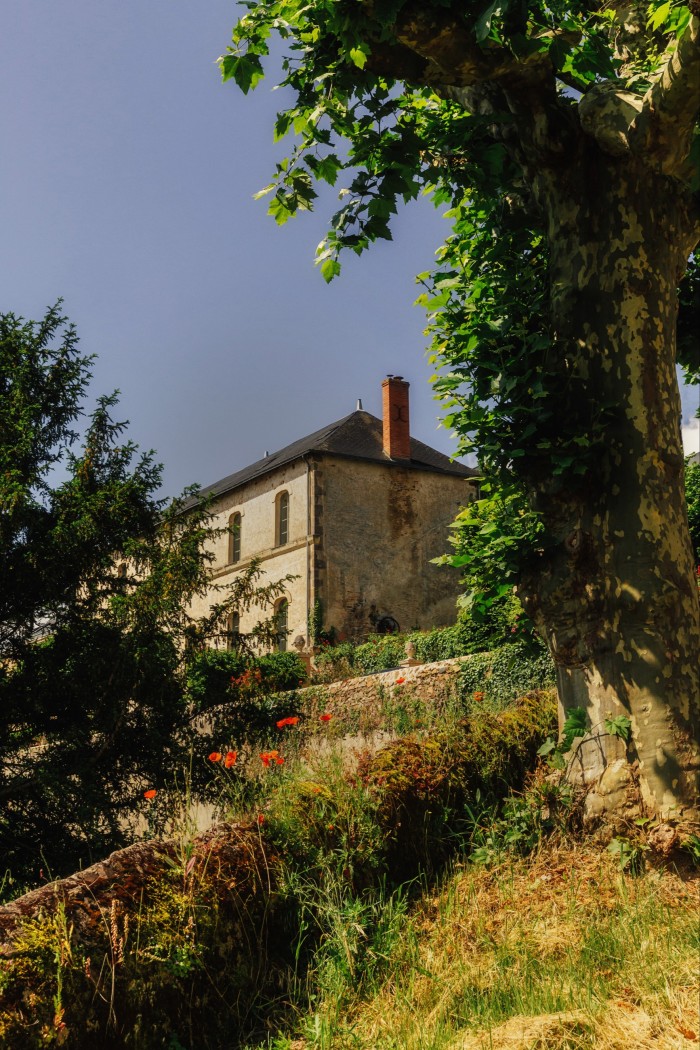
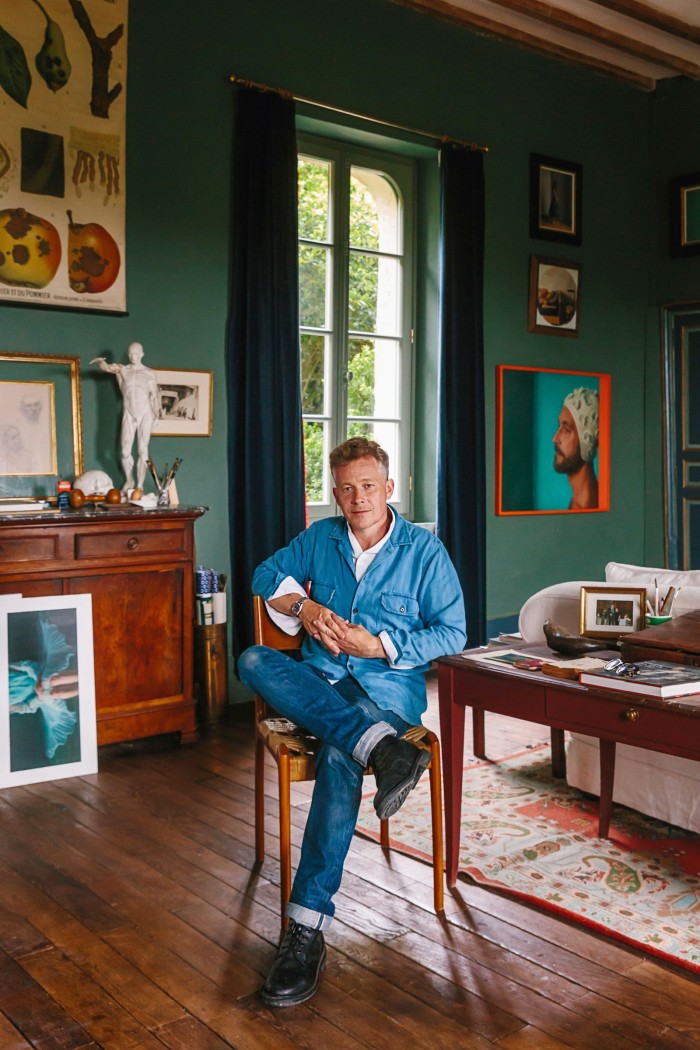
The artist moved in with an architect’s plan chest (he found the striking map of Angers nearby, which now hangs in the hall, inside it) and not much else. “I didn’t quite realize how big it was,” he says of the 6,500-square-foot property that sits on about an acre of land. “And I had no idea how to do anything other than break stuff.” For more than 14 years, he has tackled much of the restoration himself, sometimes with the help of friends, removing floors to reveal original oak planks, and removing stud walls and false ceilings to create rooms. opening to its original classroom proportions. He has taken pains to restore the original details, such as the checkerboard painted floors in the courtyardor the covered playground, which opens onto the terrace – now planted with climbing roses and wisteria – under the house. “It’s the first house I’ve ever had, and I liked the idea of having a place where I always have a project,” he says with an understatement.
On a drizzly May Day Russell Flint, a 49-year-old boy, gives a tour of the house. Along the way, he boldly refers to his whimsical decorating philosophy as “a hut-ing”. “It feels like making a nest as a child,” he says. “You use whatever you can get.” The furniture is cobbled together from local brocantes, Emaus charity shops, eBay and friends and family, consisting of a cozy “Tetris” of much-loved items. On the ground floor, there is a country kitchen led by Jean the tabby cat in a former canteen, and a paneled classroom has been painted green-blue and reconfigured as a salon. The former directorThe fourth is now one of two guest apartments, which are let out from time to time and, from August 2025, available to students of a series of painting workshops.
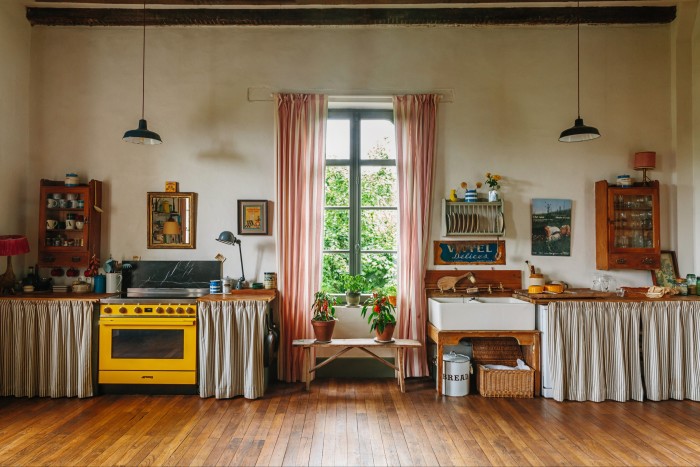
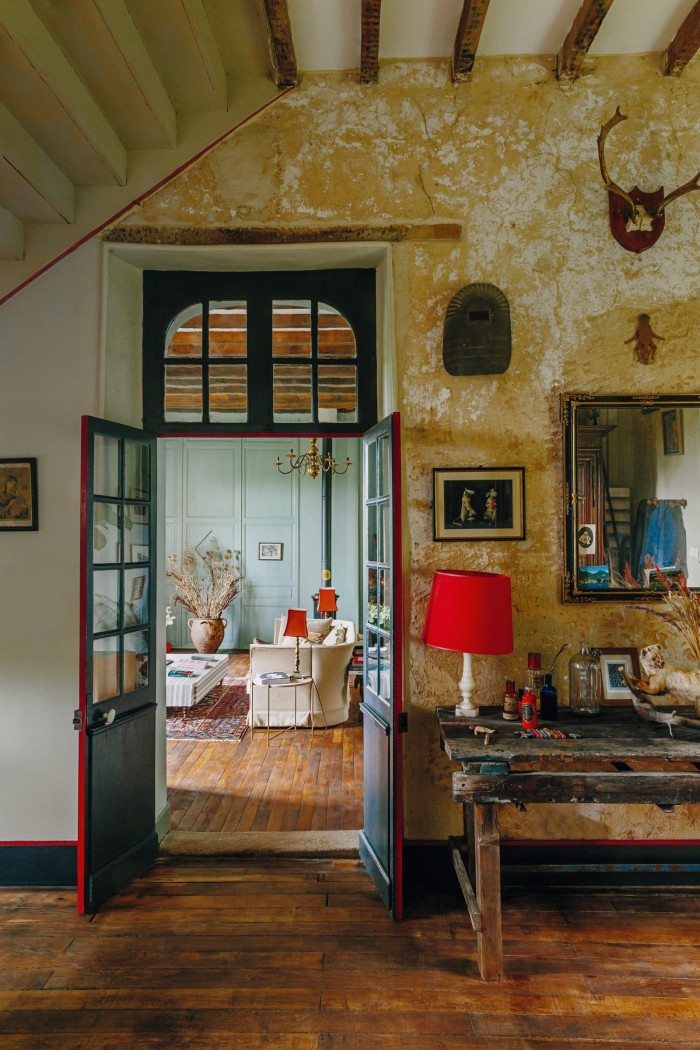
A nostalgic mood prevails – relics of the past are visible at every turn. The walls of one bathroom are covered in pages from 1938-1940s editions of it Game Pariswhich was discovered at a local grenier video. Up an elegant oak staircase is a winter bedroom with petite emerald walls (easier to heat) and a larger summer bedroom with a fireplace lined with Delft tiles requisitioned from Russell Flint’s parents’ home in Walmer, Kent. His huge studio, where he works in front of a crackling fire in winter, is dominated by a “monster” easel made by Winsor & Newton in 1905 and shaped like a guillotine. Famous paintings and prints from his great-grandfather, mainly depicting classical scenes, decorate the walls. “I’ve always loved and respected them,” he says as we pause to admire the artworks, “but I knew some art critics were sniffy about his work later, and they were fired from their jobs because ‘breastscapes’ whose technical brilliance lacked substance. ”

Perhaps such a spin explains Russell Flint Junior’s desire to discuss his own work. “I’m much more comfortable talking about the house,” he admits. Many rooms are recognizable backgrounds for his paintings. The en suite bathroom inspired many portraits after Russell Flint removed the wallpaper and found its vivid arsenic walls, repairing them by hand. The staircase leading to the upper attic levels, which had remained untouched for many years, inspired a very relaxing suite. The Tobogganist which shows a young girl on the top step, seemingly about to launch herself down a wooden sled, and The Landing it shows a distressed figure at the base step next to a single skate.
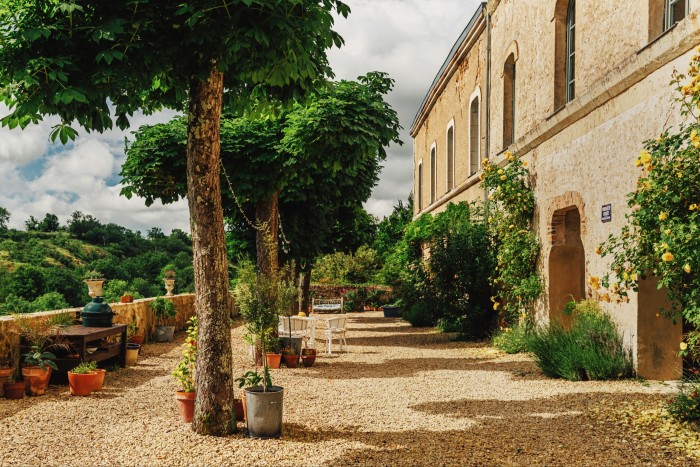
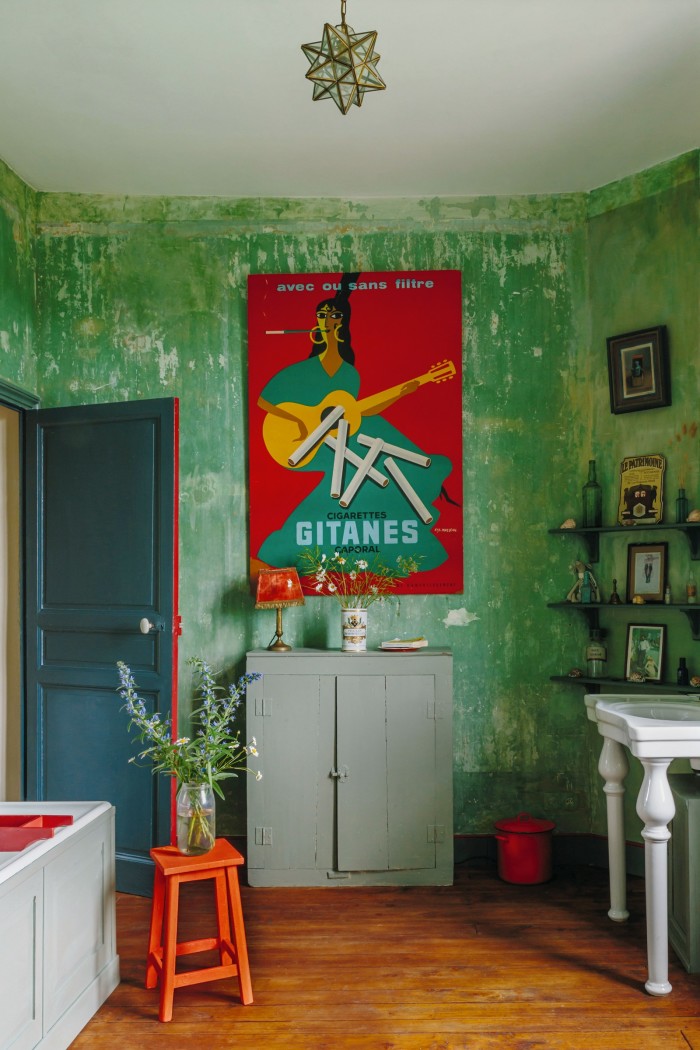
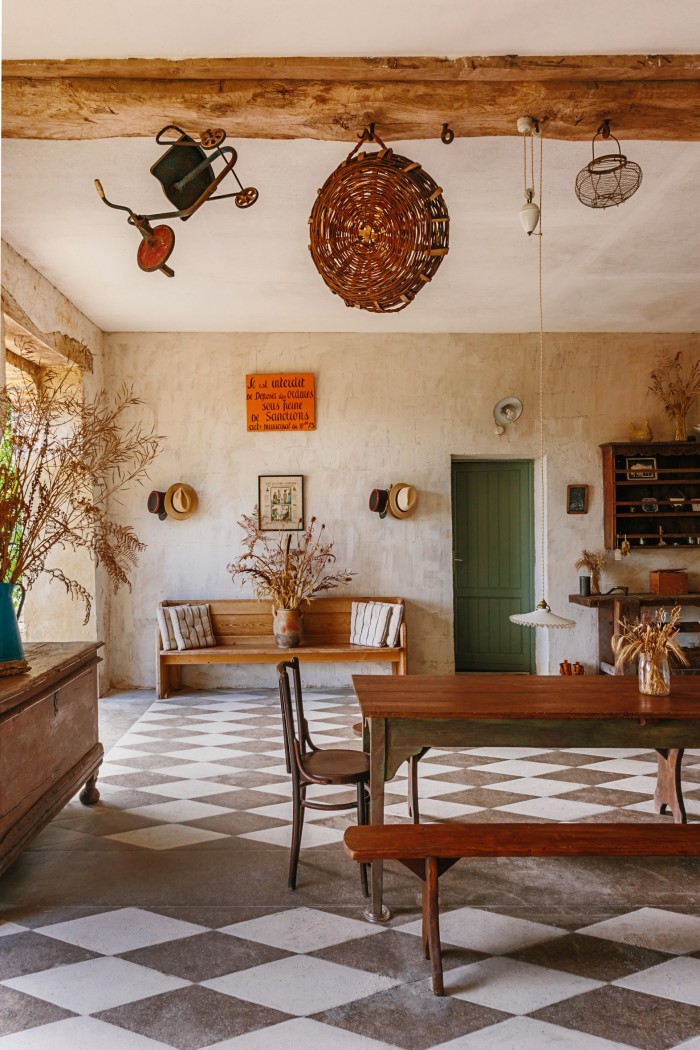
L’Ancienne École does not often appear in newer works. “I don’t want to be limited,” says Russell Flint. Although he admits, “the house cannot be separated from my paintings.” He says: “I feel creatively just as much rewarded by decorating this place.” He crosses rounds at his easel – where he works with Michael Harding’s oil paints on linen panels he makes himself – with tolling tasks such as staining a yellow (non-original) floor with walnut stain. Style decisions are instinctive. “There is a kind of similarity. When I bought this place, I wanted to create that feeling,” he recalls. “I had no idea exactly how to do it, but I wanted to create a sense of balance and composition with a pleasing sense of color.”
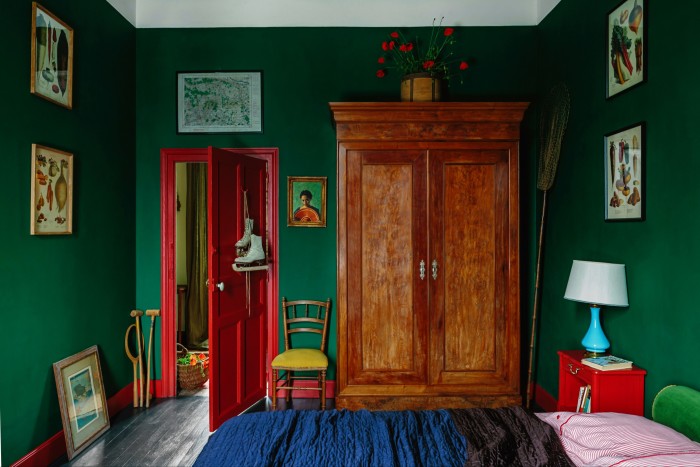
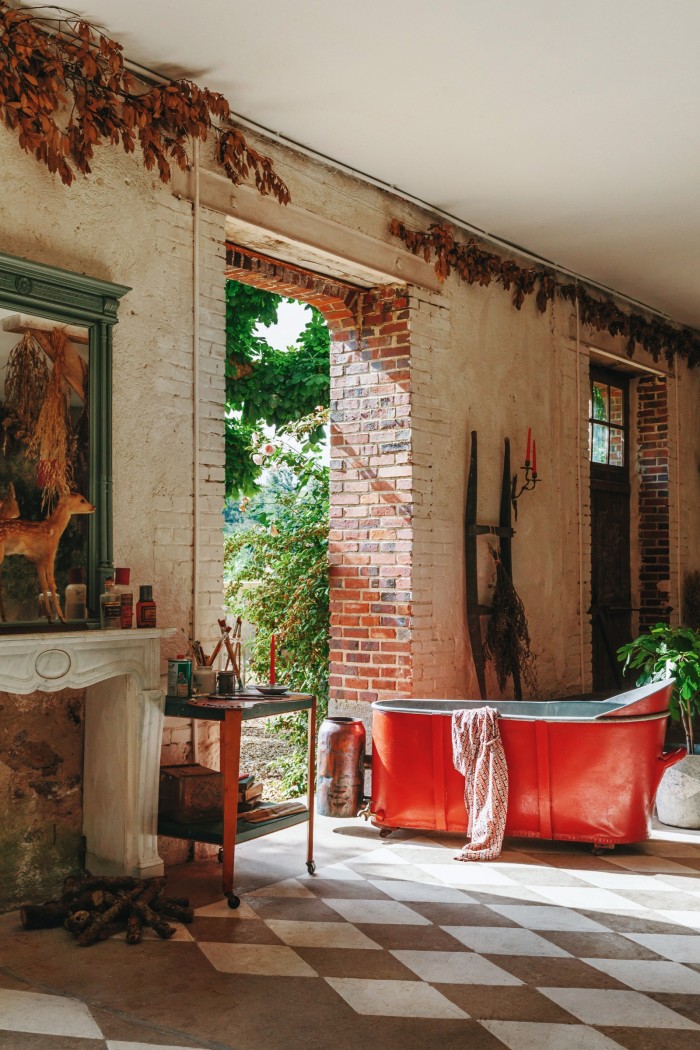
In the morning room, a lunch of barbecued chicken and roasted miso-dressed broccoli is set out with a bottle of locally produced Cabernet Franc rosé. If he’s a wary host, Russell Flint would seem anathema to that native. Raised in Canterbury by a policeman father and a nurse mother, he was determined to study realistic painting, inspired in part by the work of his great-grandfather. After receiving his schooling, he flitted between the UK, France and Italy, studying first at a British illustration school and then in Florence. After coming across a postcard in a Canterbury art shop advertising courses at L’École Albert Defois, run by American painter Ted Seth Jacobs in the Loire Valley, he signed up. Although the “hideous” building in a “nondescript village” did not live up to expectations, he “learned valuable things” from Jacobs. He also placed it near the school house, about 12 miles away. “Back then, I would have been horrified if you had told me I would settle here,” he laughs.


The house became a family home in 2020, when Russell Flint’s French girlfriend Sandrine Schumacher, founder of the production agency Hexagone, moved in with her two teenage sons from her first marriage, César and Armand. The move set in motion a renovation a year later of the unrelated 1905-era attic, which was divided into boys’ bedrooms. Schumacher travels to Paris regularly, but has taken to a quieter pace campaign. “It gives you more space to breathe and think,” she says. The couple married at the home in September 2023, hosting their wedding dinner for 80 friends and family in courtyardwhich they decorated with locally foraged wild flowers.
In June 2025, Russell Flint will present new work in a solo show at the Arcadia Contemporary gallery in New York, expanding on his favorite theme, “implicit narrative open to interpretation”. He draws inspiration from movies, books and even the toys of his childhood: a neon orange and turquoise Fisher-Price plastic airplane inspired the color palette in a recent portrait. Then there is the endless to-do list of household jobs. A long-term plan is to convert the attic in the 1850s-era wing into bedrooms. The couple also plan to create a stone staircase from the terrace to the plot of land below, which is currently carpeted with poppies, and install a swimming pool. “Even if the house keeps us busy, it’s nourishing,” says Schumacher. Russell Flint obeys. “Nothing is quite as it should be, but it is quite comfortable.”
#Education #Alex #Russell #Flint